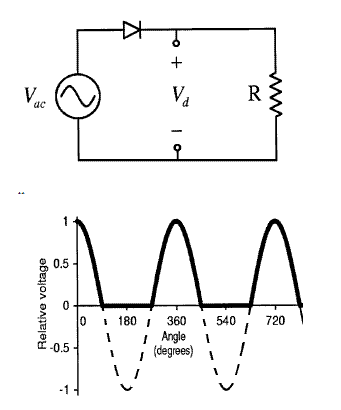- This topic has 4 replies, 1 voice, and was last updated 2 years, 11 months ago by .
-
Topic
-
If we connect an incandescent or CFL or vapour lamp(FL/Hg/Na/MH) via a diode will there be flicker and will the power consumption be halved?
If we connect an incandescent or CFL or vapour lamp(FL/Hg/Na/MH) via a diode will there be flicker and will the power consumption be halved?
Viewing 4 replies - 1 through 4 (of 4 total)
Viewing 4 replies - 1 through 4 (of 4 total)
- You must be logged in to reply to this topic.


 The frequency content of flicker is extremely important in determining whether or not flicker levels are observable (or objectionable). Describing the frequency content of the flicker signal in terms of modulation would mean that the flicker frequency is essentially the frequency of the modulating signal. The typical frequency range of observable flicker is from 0.5 to 30.0 Hz, with observable magnitudes starting at less than 1.0 percent. The human eye is more sensitive to luminance fluctuations in the 5- to 10-Hz range. As the frequency of flicker increases or decreases away from this range, the human eye generally becomes more tolerable of fluctuations. One issue that was not considered in the development of the traditional flicker curve is that of multiple flicker signals. Generally, most flicker-producing loads contain multiple flicker signals (of varying magnitudes and frequencies), thus making it very difficult to accurately quantify flicker using flicker curves.
The frequency content of flicker is extremely important in determining whether or not flicker levels are observable (or objectionable). Describing the frequency content of the flicker signal in terms of modulation would mean that the flicker frequency is essentially the frequency of the modulating signal. The typical frequency range of observable flicker is from 0.5 to 30.0 Hz, with observable magnitudes starting at less than 1.0 percent. The human eye is more sensitive to luminance fluctuations in the 5- to 10-Hz range. As the frequency of flicker increases or decreases away from this range, the human eye generally becomes more tolerable of fluctuations. One issue that was not considered in the development of the traditional flicker curve is that of multiple flicker signals. Generally, most flicker-producing loads contain multiple flicker signals (of varying magnitudes and frequencies), thus making it very difficult to accurately quantify flicker using flicker curves.